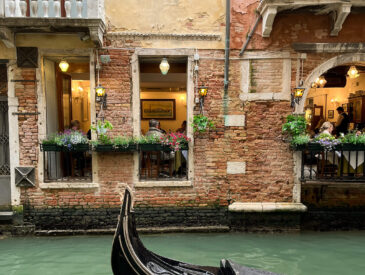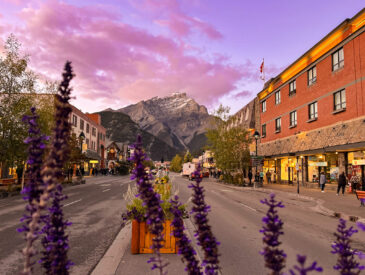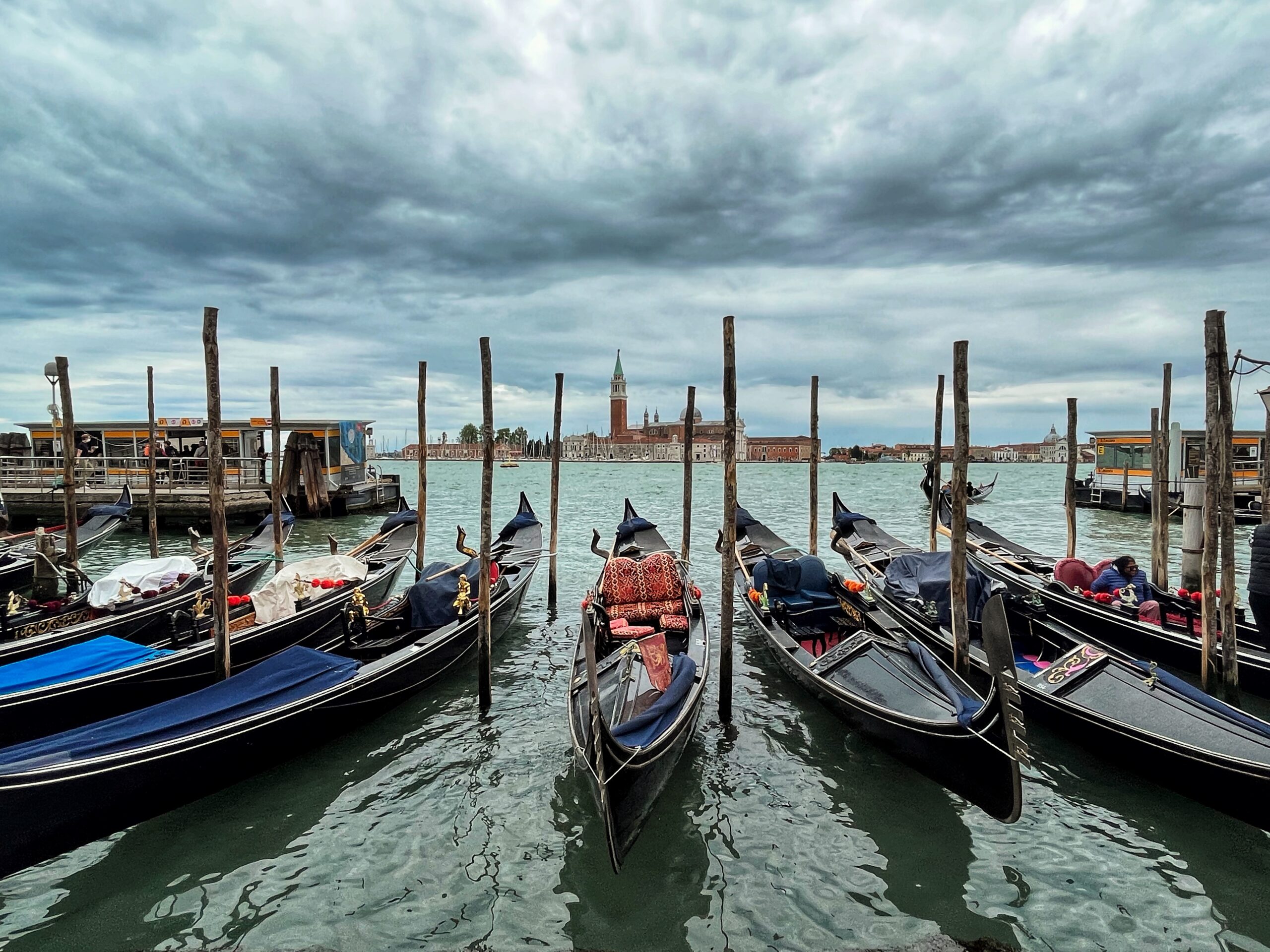Venice is one of the most iconic cities in Europe—but it’s also incredibly small and heavily impacted by tourism. The main island is only about 3 miles across, yet it welcomes millions of visitors every year, which can put a strain on the city. With such a high volume of foot traffic, the city has implemented strict rules to help protect its infrastructure and maintain a sense of livability for locals.
Whether you’re traveling to Venice for the first time or returning for another gondola ride, here are some crucial Venice travel tips for first-time visitors—including what not to do in Venice to avoid fines, disasters, or tourist traps.
Don’t Expect an Uber: How to Get Around Venice
One of the biggest surprises for first-time visitors in Venice is the lack of traditional cars and ride shares. The city moves entirely by foot and boat. Once you exit the train station or airport, your only options are walking or hopping on a boat.
There is still a public transportation system in Venice and it consists of water taxis and water buses called vaporetto (plural: vaporetti). These water buses operate on specific routes with scheduled stops across Venice and the surrounding lagoon islands, exactly like the bus system but on water. This is how the locals get around.
If you’ll be in Venice for several days, consider purchasing a Vaporetto unlimited travel pass (around €60), which can save you money and time, affording you peace of mind.
Don’t forget to validate your tickets!
You can purchase your vaporetto tickets at any stop. Similar to the subway system, your tickets will need to be validated for them to use them legally. Validating your ticket simply means you get it stamped with the date (the day you’ll be using the ticket). Usually you can validate your tickets adjacent to the machine where you purchased them.
Understand Gondola Prices to Avoid a Price Shock
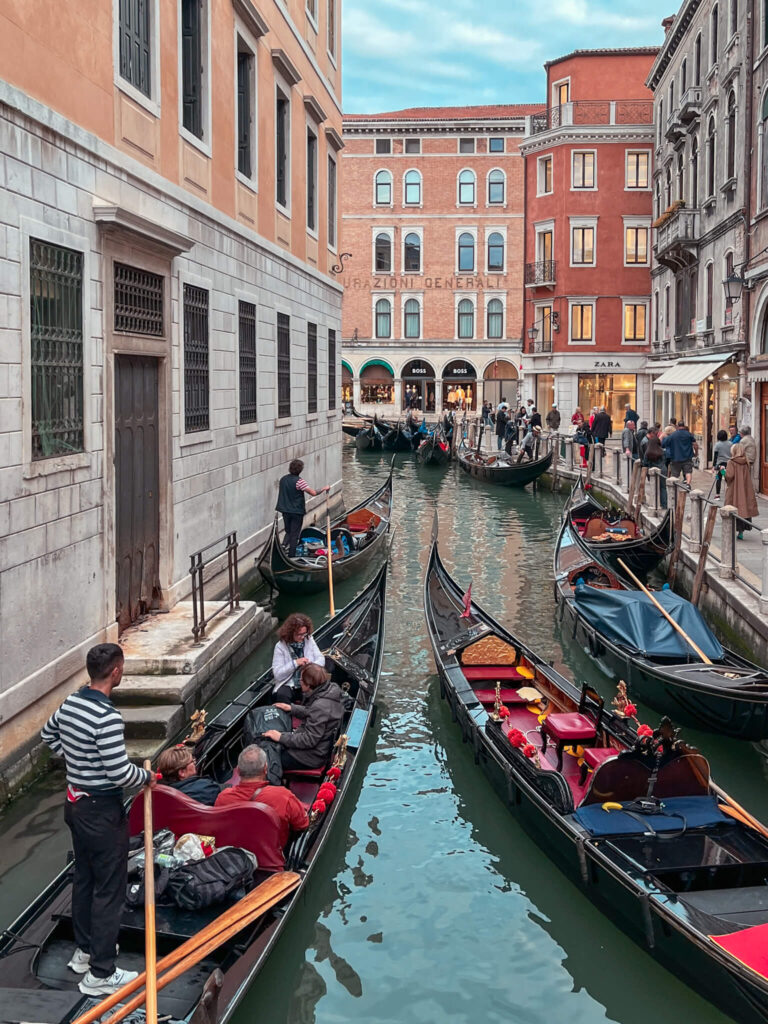
Taking a gondola ride is a Venetian dream come true, but but don’t be surprised at the price tag. A 30- to 60-minute ride can cost anywhere from €80 to €200 depending on the time of day and route. Prices tend to be higher at night or if your gondola passes through the most popular landmarks.
To avoid awkward misunderstandings (and potential irritation), always clarify the price and route beforehand. Confirm whether the fee is for the entire gondola or per person.
Some people recommend that you rely on the vaporetto instead of the gondola. While others will lobby just as hard that you should not treat the vaporetto like your private tour service. Both are reasonable point of views, here’s the difference.
Vaporetto vs Gondola: Know the Difference
- Vaporetto: The Vaporetto is a public transportation service; it’s how Venetians commute. Yes, it will take you past scenic Venetian icons — traveling up the grand canal alone you’ll pass the Santa Maria della Grazie, the dusodoro neighborhood, rialto bridge, just to name a few. They also transverse the entire lagoon, you can see everything Venice has to offer: from the Lido, Burano, Murano, arsenale among many others (those aren’t necessarily on the same route). It’s a very authentic and a broad exposure to the area. Yet, there won’t be a tour service, no one will be explaining the sites. Also, it will be cheap, especially if you are using your unlimited pass..
- Gondola: On the other hand, the gondola is a very different experience. It’s integral to the Venetian culture: the trade and heritage etc. The gondolier will chauffeur you (mostly) along the interior of the smaller canals. They’re quiet and peaceful, you’ll be up close the ornate facades, quaint bridges, and other cultural gems. The gondolier will explain the route and sites, and serenade you (for extra $).
- They are very different experiences- I don’t think one replaces the other, tbh. Also, the vaporetto is cheap enough- you can do both.
Buy Tickets to Major Attractions before traveling to Venice
Buy your skip-the-line tickets to St. Mark’s Basilica, the Doge’s Palace, and other top Venice landmarks online before your trip. Tickets often sell out, and the lines to purchase can wrap around buildings, wasting valuable sightseeing time. Booking ahead ensures a smoother experience and in my opinion—it’s not worth the risk of missing out on the iconic landmarks because they sell out :(.
Be aware that the Churches have dress codes
Don’t forget to wear “appropriate clothing” for visiting the interior of the churches. Venice enforces a strict dress code in the holy buildings: no exposed knees and shoulders in the church, and this also applies to children. Sunny days can get quite warm so you’ll need layers or risk getting turned away from these iconic Venetian landmarks— it does happen, so be prepared.
Don’t forget about the Acqua Alta
Speaking of appropriate clothing, you may want to pack some extra shoes. Venice has unusually high tides during storms, and they’re known as the Acqua Alta (the high water) and the city really does flood! The city is prepared to deal with the Acqua Alta by placing raised platforms in some areas to circumvent rising tides. Keep in mind that some walkways will be underwater and your feet can get soaked. The floods are also more likely in the winter months, although difficult to predict. This is just something you should look into and understand when traveling to Venice.
Don’t Spend All Your Time in Piazza San Marco
This area has many of the best sites in Venice: the Doges palace, Campanile, and Basilica to name a few. It is beautiful and unique — there really isn’t anywhere else on earth like Piazza San Marco.
Yet, it draws a jaded attitude from some travelers, because it’s so busy, rife with crappy food and tourist traps (that’s accurate). For day trippers (and there are a lot of them) this will be their top priority, so unfortunately, the area does get pretty crowded during the day.
That doesn’t mean you should skip it. You should NOT skip it. Try to schedule a visit during sunrise or at night, when the piazza empties out.
What you should absolutely without fail do is explore the rest of the city. This is one of the biggest Venice travel tips because the rest of the city is just as magical, and it’s wildly different than the main square.
Don’t Just Day Trip—Stay Overnight If You Can
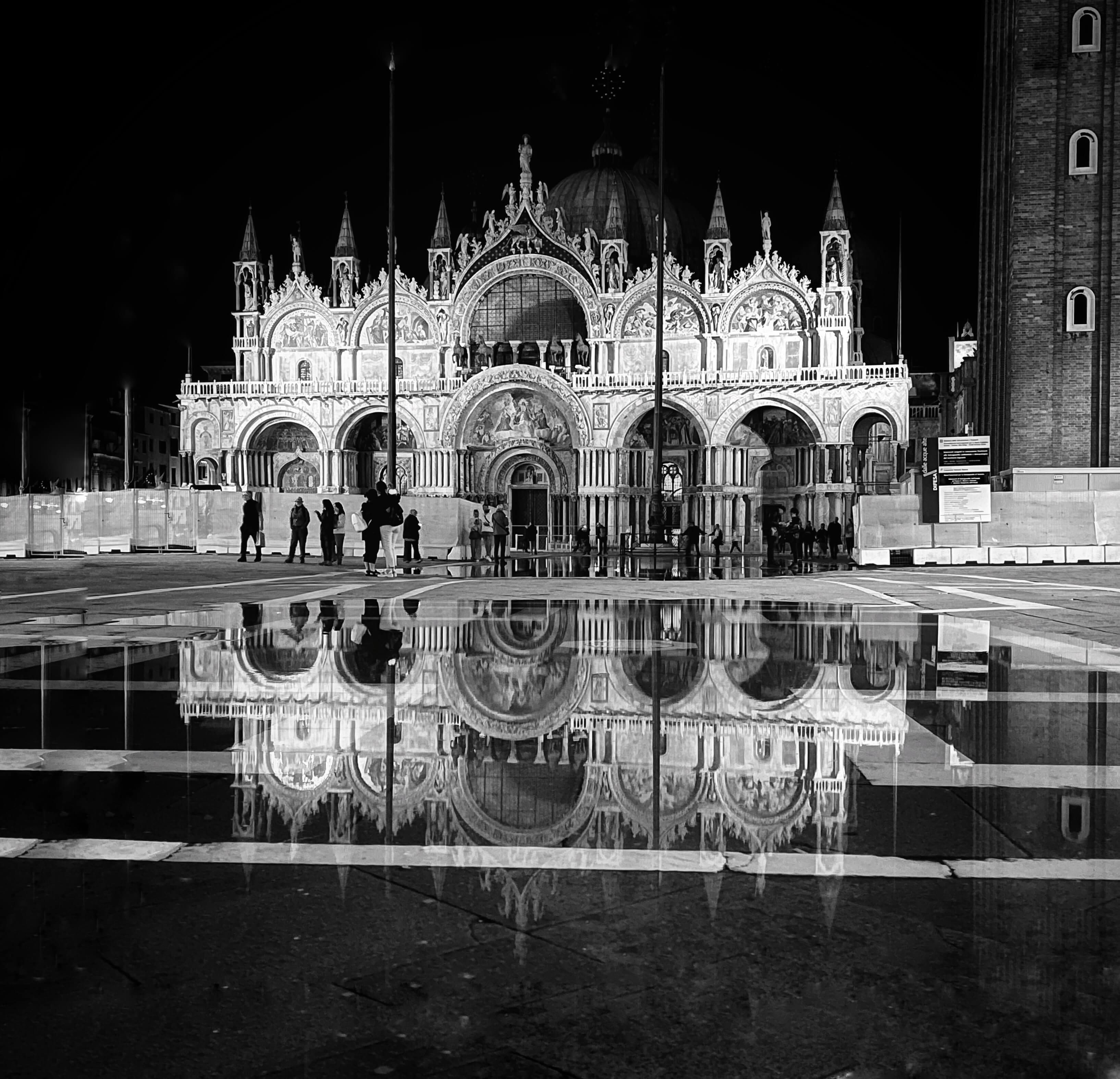
Venice is a popular destination for a day trip. I think you can have a memorable one-day excursion in the city, and if that’s all you have time for, then you should not skip Venice because of a time constraint. However, if you do have time to stay overnight, you will be rewarded with a wildly different Venice experience.
The city transforms at night- it becomes very chill. The crowds vanish and the monuments are illuminated, bathing the city in a peaceful warm glow. I know some people are rolling their eyes right now…. But it’s TRUE. I swear Venice isn’t the clustery tourist trap that some vicious rumors would have you believe!! The rest of the city is so lovely, romantic and dreamy.
You simply must move on from the sardine can of piazza San Marco at midday and see the other neighborhoods: Dorsoduro, the Zattere, and the Jewish quarter in Cannareggio.
A simple, meandering walk is a great way to experience the real city. There’s so many authentic, cool spots to see in the city that get missed on a day trip.
Don’t Skip the Islands of the Venetian Lagoon
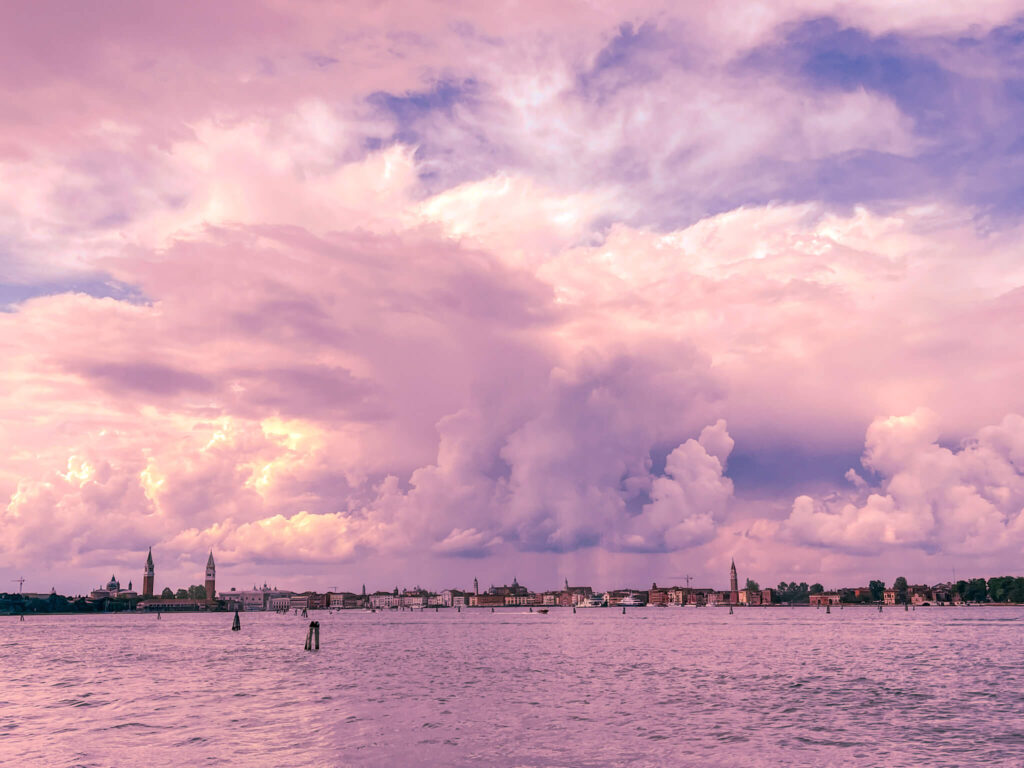
While the main city of Venice is very small, the lagoon is quite expansive. There are 100’s of small islands and each have a distinct personality and main draw. If you’re traveling to Venice, make sure you schedule some time to explore the islands.
- Murano: The epicenter for traditional glass-blowing, where furnaces still burn and you can tour the museum for the history of the craft. It’s has an authentic of vintage Venice- you can imagine what the city looked like during the republic.
- Burano: An old fishing village famous for brightly colored houses and traditional lace making.
- Torcello: A small island with cultural heritage sites but very few people. It’s interesting because it feels very old and remote, but this is where the city was originally inhabited. You can visit all three in one day by vaporetto.
- Big Venice travel tip: Don’t miss the islands!!
Try Traditional Venetian food
Also don’t obsess over pizza because it’s not even Venetian. The city doesn’t allow wood fired brick ovens on the main island because it’s a fire hazard (that’s also why glass blowing takes place on Murano).
If you want life changing pizza go to Naples we’re they’ve spent eternity perfecting the craft.
There’s plenty of delicious food to eat in Venice. The area has a distinct local cuisine based on seafood, since fishing is the traditional industry.
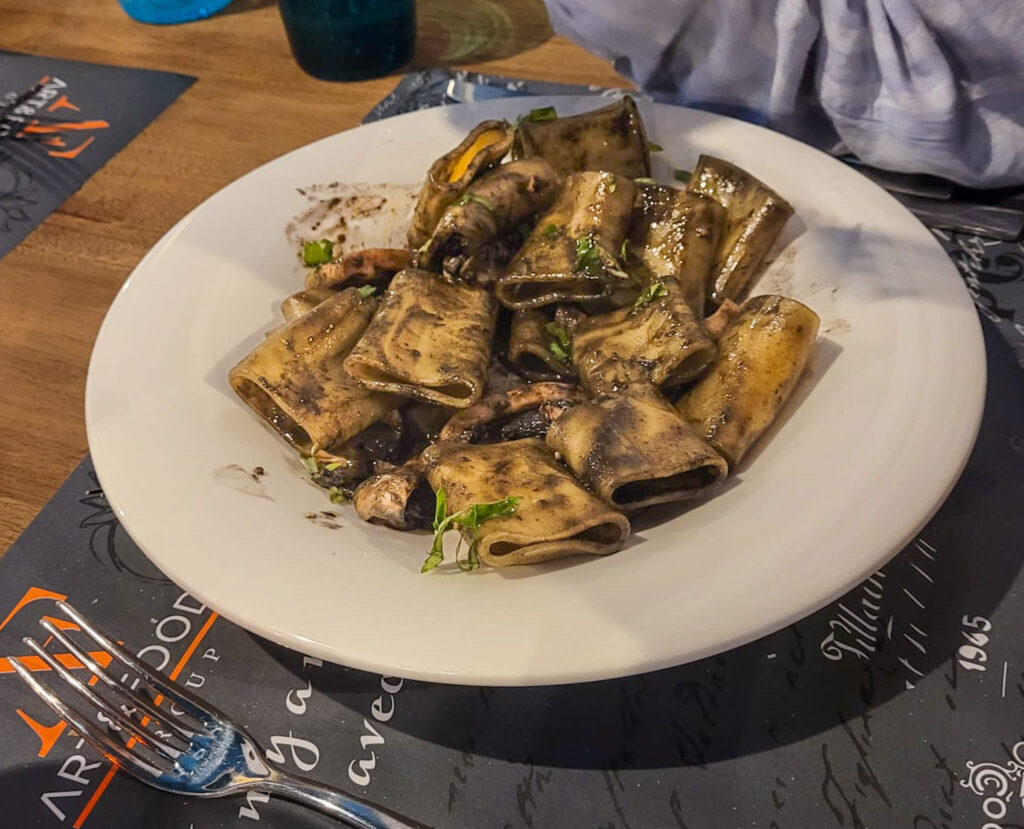
Try the awesome Venetian specialties like:
Tiramisu, which was invented in this region
Seafood risotto, like the famous Go Risotto
Seppia al nero (squid ink pasta)
Beyond the Aperol Spritz
Don’t obsess over Aperol Spritz either. I know they are good, and I love them too. But there’s a whole world of Spritzes out there!
Instead try versions that were invented directly in Venice!
- Select Spritz: Select is a similar amaro, a bitter liqueur traditionally made from roots and herbs.
- A Cynar based cocktail—if you’re daring. Cynar is an amaro that uses artichokes in it’s recipe.
Yeah, it sounds different, but the end product has an interesting taste, not at all like artichoke. The flavor is reminiscent of a cola or root beer as a distant comparison. You can try Cynar in a spritz, or in club soda with orange slices.
Both are less sweet than Aperol and much more authentic.
Things You’ll Get Fined For in Venice
The following Venice travel tips are very important because they can easily be overlooked by tourists. These rules may seem strange or harsh, but understand that Venice gets millions of tourists every year. Considering that the city is a small space, the municipality spends a lot of time and money maintaining the historic buildings, canals, and keeping the city nice. These laws exist to to help the city keep up with the many visitors.
Don’t feed the pigeons
It’s illegal, you can get fined hundreds of euro, and also publicly shamed. Feeding them causes chaos — everyone will get sh!t on and you’ll get chased out town with pitchforks. The law was established to discourage massive pigeon flocks in the city because the bird poop damages the buildings over time.
This is probably the best known rule for tourists, but there are several others
Don’t go swimming in the canals
I understand that hypnotic blue-green water is calling you, especially in the scalding height of summer. However, it’s illegal to swim in the water ways. You can get fined up to 350€ and the officials can boot you from the city. Not only could you get run over by a boat (since all of the waterways are essentially roads, it’s like swimming on a freeway), but the water is…a little gross. You’ll come out with ring worm, pink eye and an extra limb- I don’t think you should touch that water at all.
There are great beaches in Venice. If you head out to the Lido, you can relax on the warm sand and swim the northern corner of the Adriatic. It’s a very unique travel experience. Just hope on a vaporetto and explore the Lido.
Loitering is also Illegal
This essentially means you can’t sit and relax on the many steps all over the city: no eating lunch on church steps, bridge stairs, embankments, etc. It’s illegal and findable up to 200€. It’s best to eat all food in the designated bistro areas and keep your ketchup smears off their ancient stone facades.
Don’t add padlocks to the bridges
It’s also illegal to put locks on bridges. The time honored tradition of declaring your eternal love by placing a padlock on a bridge is so popular — you’ll see this all over Europe. However, it’s actually harmful to the infrastructure. There are so many bridges in the city to maintain, and Venice spends time and money remove the locks and protect the old architecture.
Venice sees millions of visitors a year, and these rules help preserve the fragile city. Respect them, and you’ll help keep Venice beautiful for everyone.
These essential Venice travel tips will help you avoid costly mistakes, steer clear of tourist traps, and have a more meaningful, smooth experience. Whether you’re sailing through the canals or sipping a spritz at sunset, Venice will reward you with memories you’ll never forget.

